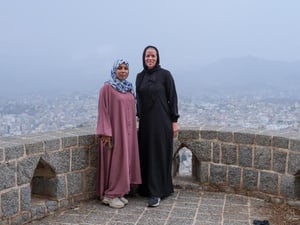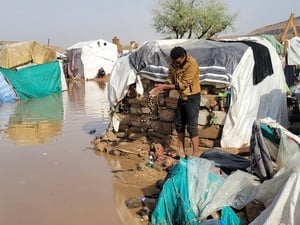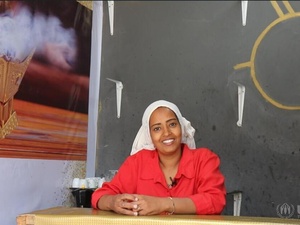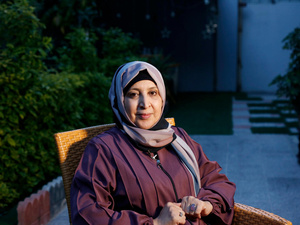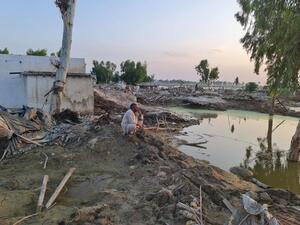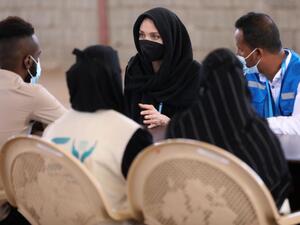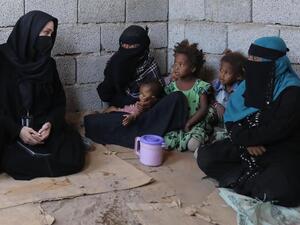Situation in northern Yemen still volatile
Situation in northern Yemen still volatile
More than five months into a ceasefire and a month after the new 22-point peace agreement was signed between the Yemeni government and Al-Houtis forces to end violence and seek political dialogue, the situation in northern Yemen remains volatile. Some 30 people have been killed in incidents in northern Yemen this week alone, according to media reports.
We estimate that so far only around 14,000 internally displaced people (IDPs) have returned to their areas of origin out of Yemen's displaced population of more than 324,000. Many fear retaliation or have no place to return to due to the destruction of houses and infrastructure. The lack of basic services, such as health care, education and water supply in many parts of the Sa'ada governorate also discourages many IDPs from returning. A third of the displaced are living in Sa'ada governorate and most of them are being hosted by local communities, staying with relatives, friends or neighbours.
UNHCR's team in Sa'ada City reports that the city is slowly recovering. Markets are coming back to life and some schools have resumed classes, allowing children who have lost nearly a year of education to return to classes. Health services in the city remain limited as a number of facilities were destroyed by fighting and many health workers have yet to return.
So far, access for UNHCR staff remains limited to Sa'ada City and nearby areas. We have scarce information on the humanitarian needs and situation beyond a seven-kilometre radius of Sa'ada City. UNHCR, with other humanitarian agencies, continues to advocate for secure and unhindered access to all communities affected by the conflict. Overall insecurity and a lack of access to hundreds of thousands of civilians, especially in northern Amran and Sa'ada governorates, continue to hamper the delivery of assistance.
Many homes in Sa'ada governorate have been damaged or destroyed and work needs to be done to rehabilitate these areas. In the village of Malahit, for example, most people have lost their livestock - a primary source of income. Damage to water reservoirs and tanks forces people to rely on river beds, or wadis, for water for all uses, resulting in poor sanitary conditions. With some 80 per cent of houses damaged or destroyed, many people have found shelter close to or in the ruins of their homes. Those who never left and returnees alike are in need of shelter and other relief. UNHCR is planning to start distributing return packages, including food, construction tool-kits, plastic sheets and hygiene kits together with other relief items in the coming weeks.
Stability and security are vital for largescale, safe, and voluntary returns to Sa'ada. Currently, however, landmines present a serious threat. UNHCR is especially worried about the safety of civilians who decide to return spontaneously. Mine clearing and removal of unexploded ordnance remains a top priority.
Meanwhile, the three IDP camps at Al Mazrak in Hajjah governorate, continue to host some 19,000 IDPs. Almost a year after conflict erupted, in August 2009, the situation of the displaced is becoming untenable, with most people having run out of resources.
UNHCR's efforts to facilitate solutions for the displaced and refugees in Yemen are being severely hindered by the current funding crisis. Our revised needs for refugee and IDP programmes in 2010 in Yemen amount to US$ 52.1 million. So far, we have received 44 per cent of the requested funds.


